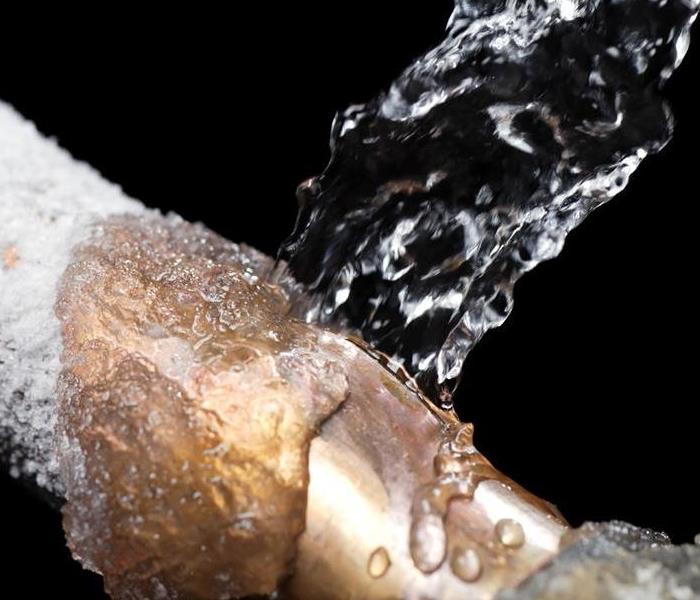Preventing and treating frozen pipes
10/26/2017 (Permalink)
Frozen water pipes and leaks can quickly lead to disaster. Water damage can result in costly repairs, some of which may not be covered by home insurance policies. Preventing frozen pipes and leaks is essential once the mercury starts to dip. Water expands when it freezes, and if it expands enough, it can cause pipes to burst. Yet, burst pipes do not usually occur directly where the ice is forming. Rather, the ice increases water pressure buildup elsewhere in the pipe, typically between the faucet or spigot and the ice blockage. Therefore, adequately protecting the entire length of pipe during cold spells can be necessary. Any home built in colder climates should have its pipes located on the inside of building insulation. However, pipes in crawl spaces, attics and basements, as well as those located on outside walls, are vulnerable to freezing. To prevent frozen pipes and bursting, follow these tips.
Drain water from outdoor hoses and close inside valves supplying water to outdoor faucets. Keep the external hose bib open to let water drain and to allow for expansion should any water become trapped.
Inspect pipes in areas that are unheated. Insulate any pipes located in these areas.
Heat tape, pipe sleeves, heat cables, and similar materials can be used to protect exposed water pipes from freezing. Even newspaper can help insulate pipes.
Keep garage doors closed when water supply lines are located in the garage.
Open cabinets indoors to allow heat to reach pipes underneath sinks.
Seal leaks that allow cold air inside. Also, look for air leaks around electrical wiring and vents that are in close proximity to pipes.
If you will be away from home, keep the thermostat set to no lower than 55 F (12 C). Have a neighbor check on the house periodically to make sure no pipes are freezing.
Keep water trickling out of a faucet when temperatures are very cold. This will relieve pressure inside of the pipe and could prevent bursting if an ice blockage occurs.
If you suspect a pipe has frozen, warm air from a hair dryer can help thaw it out. Never try to thaw a pipe with an open flame.
If a pipe bursts, turn off the water from the main shut-off valve.
Call a plumber if pipe problems are beyond your expertise.






 24/7 Emergency Service
24/7 Emergency Service
